Samsung Q60R QLED TV
Over the last few years Samsung’s QLED TVs have become synonymous with bright, colorful and, admittedly, rather expensive screens. That’s why there’s always been an entry-level model, whether it’s the Samsung Q6FN from last year, the Samsung Q6F from the year before - or, this year, the brand-new Samsung Q60R QLED TV. There’s always been some way to get a QLED TV at a lower price… for better and worse.
The problem here is that while it shares the QLED monicker, this low-tier TV in Samsung’s QLED lineup skimps on QLED’s best features: it doesn’t use the OneConnect Box for cables and, worse, it doesn’t use full array lighting and instead packs LEDs into the edge of the screen. In practice, that means it’s not quite QLED in the same vein as the bright, colorful, extravagant panels we see elsewhere in the line-up that can make HDR content really shine.
All said, while this smart TV may have some of the same features of Samsung’s QLED lineup, the Q60R doesn’t have the performance that’s become so synonymous with the technology. That doesn’t make it a bad TV overall - in fact, it’s great for watching HD/SDR content – it just doesn’t live up to the performance of the other QLED TVs.
- Check out the best 65-inch TVs and best 75-inch TVs
Price and availability
The Samsung Q60/Q60R are the company’s 2019 entry-level QLED TVs. They’ve been available since April and are available in six screen sizes: 43-inch, 49-inch, 55-inch, 65-inch, 75-inch and 82-inch. The major difference between the models are price (obviously) and the fact that the larger screen sizes (75- and 82-inches) has Samsung’s Wide Viewing Angle tech inside that helps images retain their color saturation when viewed off-angle.
In the US, pricing starts $699 at the low end for the 43-inch QN43Q60RAFXZA and extends up to $2,999 for the 82-inch QN82Q60RAFXZA. We reviewed the 65-inch QN65Q60RAFXZA that comes in at just $1,299 – which we feel offers a nice balance between price and performance. That said, the 55-inch QN55Q60RAFXZA is also a good buy at $999.
In the UK, pricing starts at £799 for the 43-inch QE43Q60RATXXU and extends up to £3,999 for the 82-inch QE82Q60RATXXU. These Samsung TVs are a bit pricier in the UK but remain a good value if you’re looking at the 55-inch QE55Q60RATXXU (£949) or the slightly overpriced 65-inch QE65Q60RATXXU (£1,499).
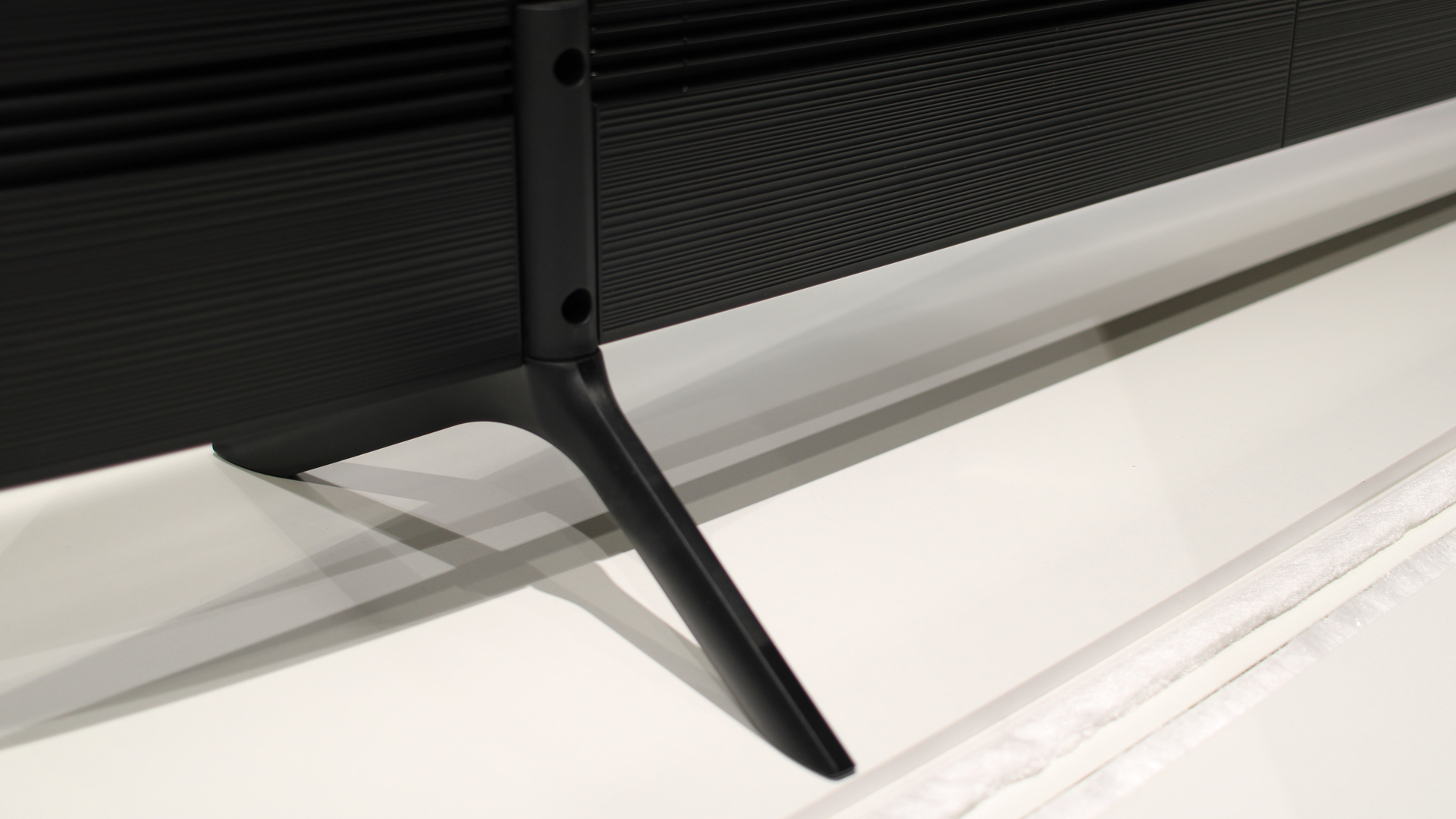
Design
While it’s the lowest-tier QLED in terms of performance, the Q60R looks nearly as good as the other TVs in terms of design. The slim bezel is kept to a relative minimum, and the u-shaped legs sit nicely under the screen. Better yet, the TV is slim when viewed on the side, and that means it will look great on your wall. Unfortunately, both the bezel and the legs are made from plastic which can easily snap or chip – just one more reason you should consider wall-mounting.
The slimness of the TV is due to the TV using an edge-lit design instead of full-array lighting. The downside is that the TV can’t get as bright as the other TVs that use a full-array direct-lit panel, and contrast takes a big hit. We’ll talk more about these problems further down in the performance section but the silver lining here is that at least the TV is relatively thin.
Spin the TV around to the back and you’ll find all the connection ports for the TV. There you’ll find four HDMI ports (all of which are HDMI 2.0, and HDMI 4 has ARC), plus two USB ports and one digital audio out port. The USB ports can be used to power a streaming stick if you don’t want to use Samsung’s built-in smart platform, or they can be used as ports for a USB stick with extra media.
Either way, they’re nice to have.
Speaking of things that would be nice to have, as you might’ve noticed the Samsung Q60R doesn’t use Samsung’s OneConnect Box that does a better job of hiding cables. The way this TV is setup you’ll need to run cables directly into the back of the screen, and that can create a kind of chaotic mess if you’re not careful. Lacking a OneConnect Box isn’t a dealbreaker, but it is one more feature you’ll get if you upgrade to a higher-end model.
Design TL;DR: Despite using plastic for most of the TV’s design, the Samsung Q60R is a good-looking TV that’s relatively slim thanks to its edge-lit LED panel.
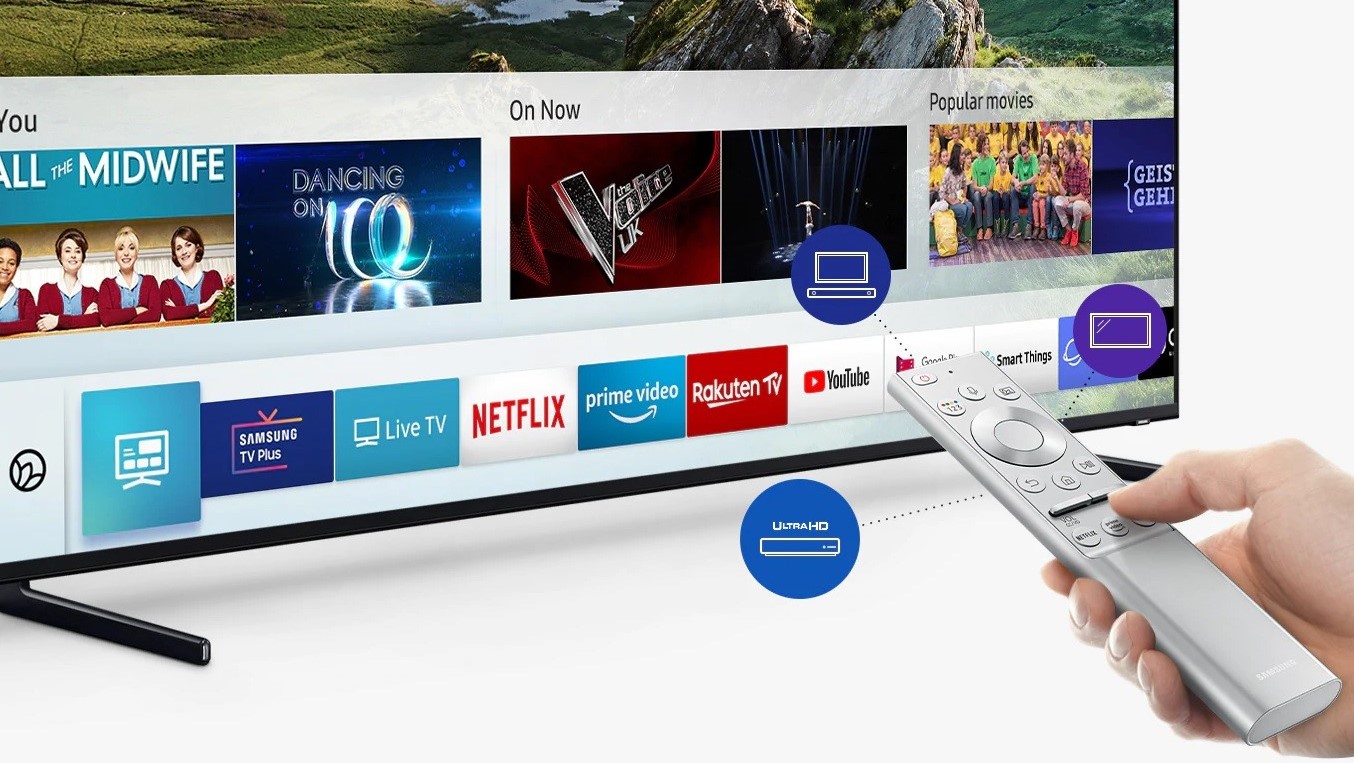
Smart TV (Tizen)
What the Samsung Q60R does share with its QLED brethren, however, is the Tizen smart platform that acts as the brains behind the brawn. It’s fast, responsive and easily one of the better smart platforms on the market alongside LG’s WebOS and Roku TV.
Like last year’s Tizen OS you can expect many of the same apps here: Netflix, Amazon Prime Video and Hulu take the lead in the US with prime spots on the home content bar and on the remote itself, plus expect catch-up services like BBC iPlayer and ITV Hub in the UK.
At the far left of the home content bar you’ll find the Universal Guide that acts as a recommendation area for new content and Samsung’s TV+ app that combines online content feeds with OTA channels if you have an antenna.
The latest additions to the 2019 version of the software include Ambient Mode on every set in this year’s lineup (it was previously limited to the top-tier screens), plus Apple Airplay 2 and Apple TV that lets you stream movies from your iTunes account and Apple devices. That said, you the TV’s primary virtual assistant is still Bixby, who’ll be able to help you control smart devices linked together by your Samsung SmartThings account.
While most of the new features are great - especially the Apple TV integration and Ambient Mode that helps the TV blend in to the wall when it’s in standby mode - we did have problems getting Bixby to recognize certain movie names (‘Thor’ was repeatedly mistaken for the word ‘Four’, for example) and Netflix occasionally encountered an error that required us to restart the app. These were minor problems, ultimately, and didn’t detract too much from the overall experience.
Smart TV TL;DR: The fast and responsive Tizen smart platform continues to break new ground by offering Apple TV integration directly into Samsung’s smart TVs.
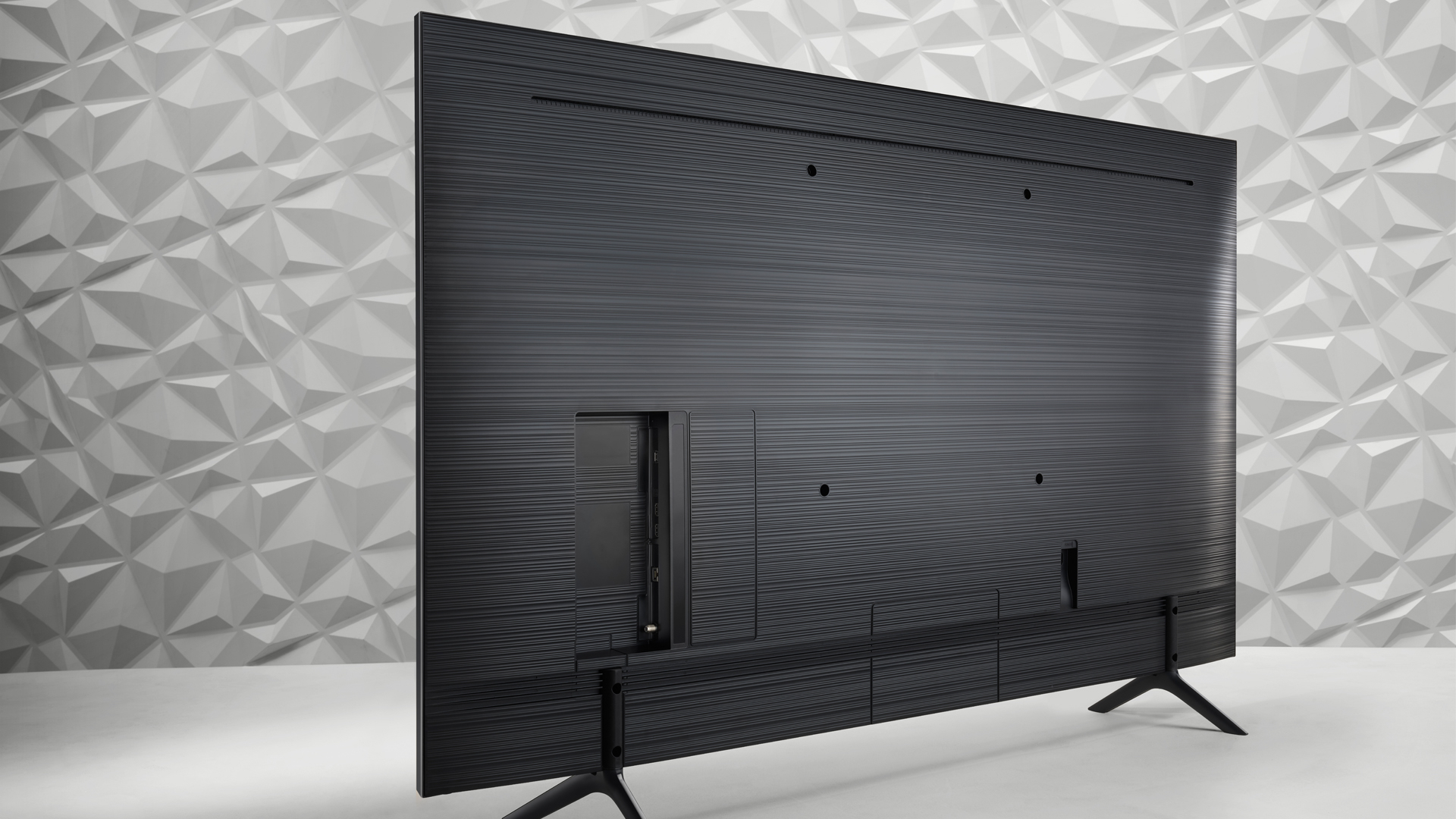
HD/SDR Performance
If you’re buying this TV to watch HD/SDR content - live cable, OTA broadcasts and non-4K content from streaming services - you won’t be disappointed with the Samsung Q60R’s performance. That’s because, as you might already know, HD/SDR content doesn’t need extravagantly high brightness to put out dazzling pictures. All it needs is a good image upscaler - and that, the Q60R definitely has.
To be more specific, the Samsung Q60R uses the company’s Quantum Processor 4K that uses AI algorithms to fill in the details when upscaling from HD to 4K. The resulting image is not only clearer but, actually, more color accurate, too - even in the Dynamic picture mode. The processor can take really any image - whether that’s a 720p YouTube video or an OTA news broadcast - and make it look pretty good. We still kind of prefer Sony’s upscaling process a tad more than Samsung’s but increasingly they’re harder to tell apart.
In HD/SDR, you’ll find four picture settings - Dynamic, Standard, Natural and Movie - with the middle two looking relatively similar with a slight change in brightness, and the latter adding a slight sepia tone to the overall image. This is actually one of the few times where we’d recommend using the Dynamic setting - as that outputs the most brightness at the expense of some oversaturated images. It’s not ideal if you’re looking to get the most accurate picture settings, but if you’re in a bright room, it’s about your only worthwhile option.
Throughout our testing period we watched a number of HD/SDR films and TV shows including Baby Driver and seasons one and two of Dirk Gently's Holistic Detective Agency. The former proved to be a great test bench for the TV’s motion handling as there are a lot of chase scenes in the film while the latter was a good test of the TV’s color.
In terms of motion handling, Samsung has come a long way - and probably now has the edge on LG in the category. Most action scenes in Baby Driver looked super smooth while dialogue scenes never had that soap opera effect. Adversely, the colors in the second season of Dirk Gently’s Holistic Detective Agency were a bit oversaturated and really didn’t do anything to help the show’s otherwise great cinematography. We noticed a bit of motion blur when playing Days Gone on PS4 Pro, but again, it wasn't super noticeable if you weren't looking for it.
HD/SDR Performance: With a great upscaling engine and just enough brightness, the Q60R is a good-but-not-incredible HD/SDR screen.
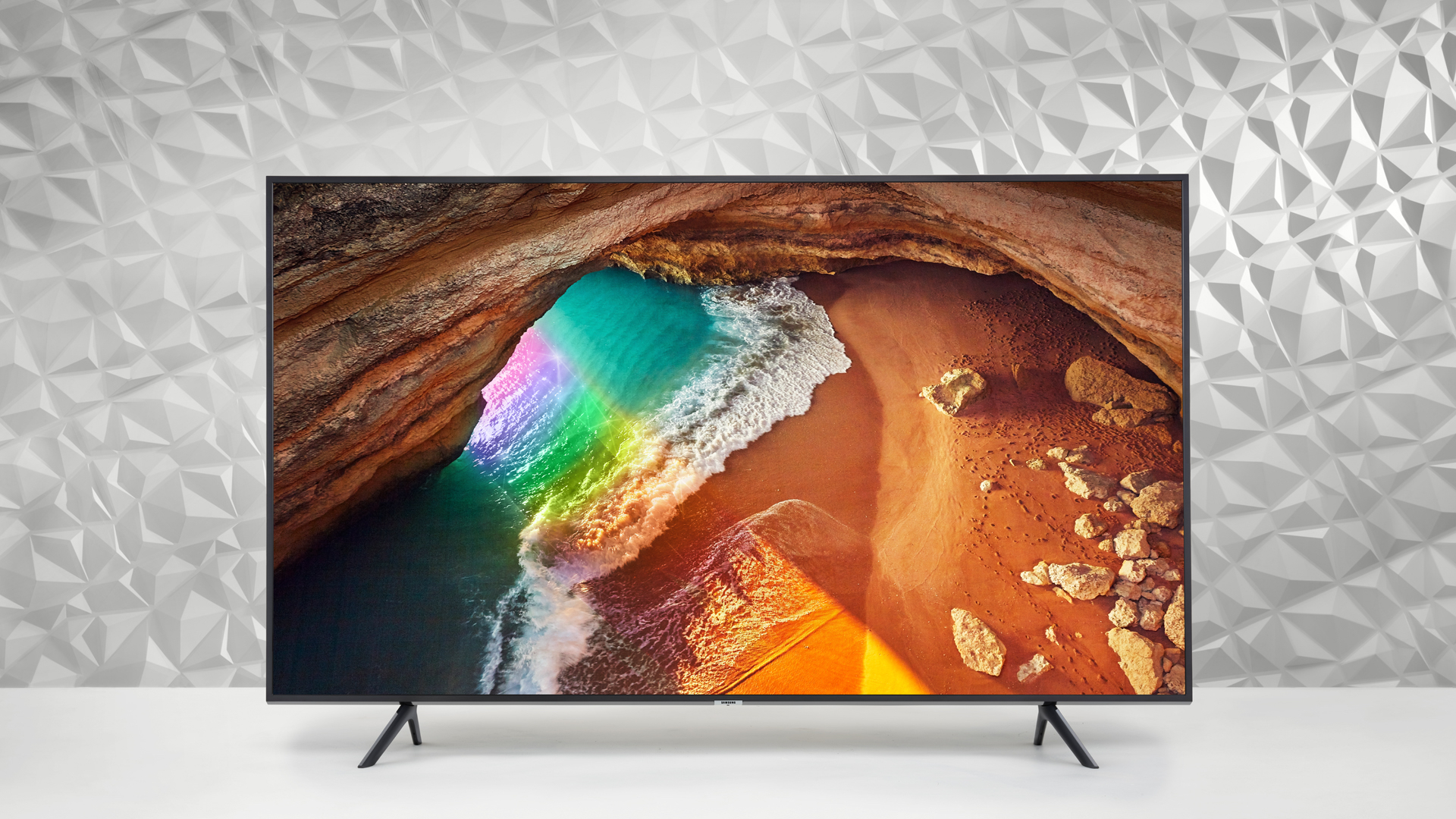
4K/HDR Performance
Where we were a little more disappointed was with the TV’s 4K/HDR performance that really lacked in comparison to what we’ve seen on Samsung’s higher-end QLED TVs. That all comes down to the fact that this isn’t a Direct LED backlit model - it can’t get nearly as bright as its QLED brethren, and that means you won’t have the same level of contrast and offers a smaller range of displayable colors despite supporting HDR10 and the HDR10+ formats.
4K/HDR films and TV series don’t really dazzle you the same way they would on another TV - especially if you’re sitting in a bright room. Stack this side-by-side against the Vizio P-Series Quantum from last year or the Sony X950G that just came out a few months ago, and the Q60R looks positively dull by comparison.
While it’s pretty clear that Samsung Q60R struggles in the peak brightness department, the TV also struggles with black levels, too: On a number of occasions we noticed black level crushing and the removal of details in areas of extreme darkness while watching 4K HDR content. It happens occasionally, and while it’s not a dealbreaker it is something you wouldn’t see as frequently on another similarly priced TV.
At this point we’ve probably painted the Q60R as a lackluster 4K TV - and while that’s certainly true when you compare it side-by-side other screens or switch from Dynamic to one of the more mundane picture settings - it really does have some merit: We spoke about the surprisingly good motion handling in the section above and the color accuracy in the section before that, plus the Dynamic setting does add some color vibrancy back to the picture. It also was fine when we watched 4K/HDR sports content like Last Chance U on Netflix - a series that really doesn't utilize every color the TV is capable of producing.
The other silver lining here is that the Q60R is a pretty good screen for gamers thanks to its low input lag and Auto Game Mode that recognizes when a game system is plugged in as a source. This is also the world’s first FreeSync-supported TV making it a perfect companion for any AMD system you might want to bring to the living room.
4K/HDR Performance TL;DR: While it doesn’t have the brightest brights and darkest darks, the Q60R is a good pick for gamers who prefer responsiveness over visual quality or documentary enthusiasts who don't need cinema-level visuals.
Sound
Like the visual performance, the Q60R’s audio performance is a bit of a mixed bag. On the plus side, the new AI-controlled Intelligent Audio feature helps elevate the mids and add clarity to the dialogue... but it’s not what we’d consider cinematic sound, either.
Most of the time the sound is middling in terms of richness, soundstage and tonal balance. This isn’t the most musically inclined TV we’ve ever heard, nor is it the best-suited to make a movie’s soundtrack come to life, but it is good at dialogue.
Thankfully, the good news for folks who want that extra oomph in terms of audio is that the TV has built-in Bluetooth, Optical Audio Out and HDMI ARC - all of which are ways to get sound from the TV to any kind of speaker you may have laying around.
If you’re in the market for a new surround setup, the best partner for the Samsung Q60R is a Samsung Soundbar - not only will it match the TV’s aesthetic, but they’re also some of the best-sounding unibody speakers on the planet in 2019.
Sound TL;DR: Sound is a bit of a mixed bag, but overall you can expect clear dialogue thanks to the new Intelligent Audio feature.
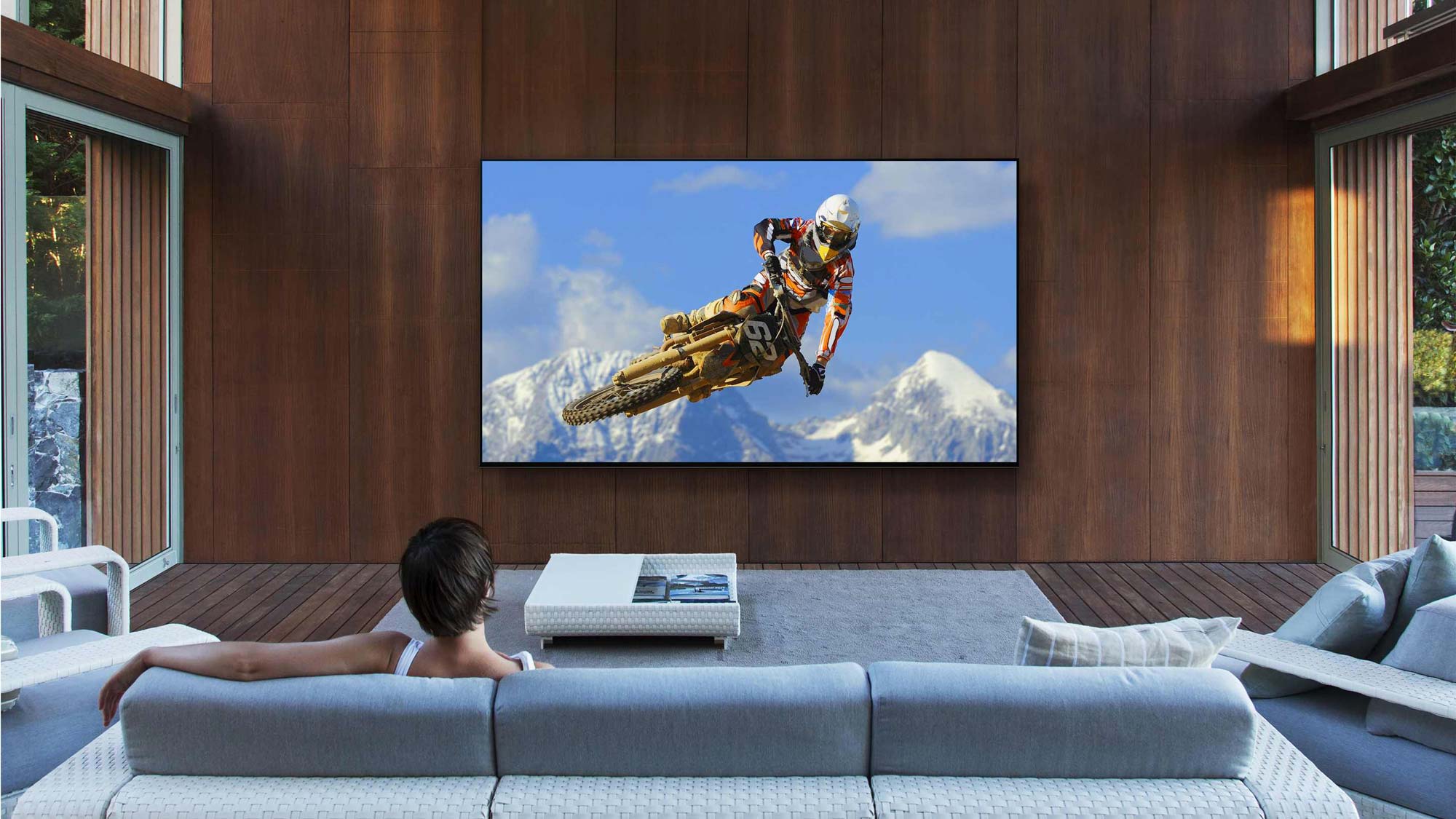
Other panels to ponder...
There are very few TV series in the world that have the range of the Samsung Q60R. The fact that there’s both a super cheap 43-inch variation and an understandably pricey 82-inch version means that there’s little in the way of comparisons.
Because there isn't anything as versatile, instead let’s focus on screens you could get for around the same price in the 55- and 65-inch range.
While it lacks many of Samsung's coolest tricks like AI Sound and the Quantum Processor 4K, the TCL 6-Series is still one of our favorite mid-range 4K HDR TVs. It can be had for around $300 less than the Samsung Q60R and provides even better picture quality plus support for Dolby Vision.
Another good pick would be Sony's X950G Series (XG95 in the UK) that has a number of comparable features and offers even brighter, punchier pictures. It's slightly more expensive than the Q60R, but it's worth looking at before you buy Samsung's entry-level QLED TV.
Final verdict
The Samsung Q60R is less of a door to the company’s flagship TV products and more of a door frame - it has some of the same attributes, but ultimately lacks the defining feature.
We liked that Samsung uses the same Tizen smart platform and brings many of the same modes from the flagship Q90R like the Quantum Processor 4K, Intelligent Audio and Freesync support to this budget model, but the absence of a full array panel means that picture performance will never match the higher-end series.
Taken on its own, the Q60R is a fine 4K TV. It doesn’t offer the best all-around value nor the best performance in its class, but it’s more than capable of rocking HD/SDR content.
- Samsung Q900R 8K QLED TV review: The 8K future of TV, in your house today
0 comments:
Post a Comment